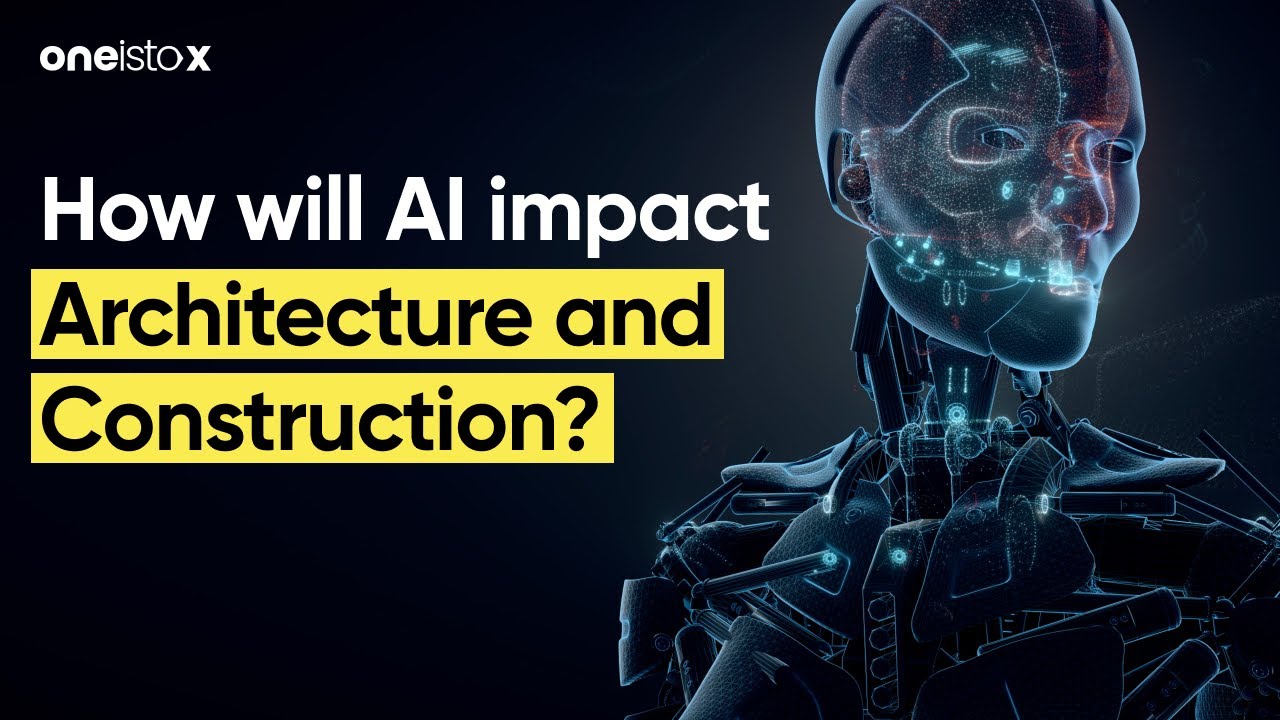The Impact Of Automation And Artificial Intelligence On Architecture And Construction
However, the impact of automation and artificial intelligence on architecture and construction also raised concerns about job loss, safety, and ethical issues. In this article, we will explore the impact of automation and AI on architecture and construction.
Author:George EvansMar 17, 2023101.5K Shares1.6M Views

In recent years, the fields of architecture and construction have seen a significant increase in the use of automation and artificial intelligence (AI) technologies.
These technologies have been used to streamline processes, reduce costs, and improve efficiency.
However, the impact of automation and artificial intelligence on architectureand constructionalso raised concerns about job loss, safety, and ethical issues. In this article, we will explore the impact of automation and AI on architecture and construction.
Automation In Architecture And Construction
Automation has been used in architecture and construction for many years. For example, computer-aided design (CAD) software has been used to create 2D and 3D designs, as well as to generate construction documents. This technology has significantly reduced the time and effort required to create and modify designs.
More recently, automation has been used in construction to perform tasks that were previously done manually. For example, robots are being used to lay bricks, install drywall, and even pour concrete. These robots are faster and more accurate than human workers, and they can work around the clock without getting tired.
Another area where automation is being used is in the fabrication of building components. For example, modular constructioninvolves the prefabrication of building components off-site, which are then assembled on-site.
This approach has many advantages, including reduced construction time and improved quality control.
AI In Architecture And Construction
AI is also being used in architecture and construction. One area where AI is being used is in energy modeling. Energy modeling is the process of simulating a building's energy use to identify opportunities for energy savings.
AI algorithms can analyze data from building sensors and other sources to identify patterns and make recommendations for energy-saving measures.
AI is also being used to optimize building performance. For example, machine learning algorithms can analyze data from building sensors to identify inefficiencies in the building's heating, ventilation, and air conditioning (HVAC) systems.
These algorithms can then make adjustments to the HVAC system to improve efficiency and reduce energy costs.
Another area where AI is being used is in building automation systems. Building automation systems are used to control and monitor a building's mechanical and electrical systems.
AI algorithms can analyze data from these systems to identify opportunities for optimization and make adjustments to improve performance.
The Impact Of Automation And Artificial Intelligence On Architecture And Construction
The increasing use of automation and AI in architecture and construction is having a significant impact on the industry. One of the biggest impacts is on jobs. As more tasks are automated, fewer workers are needed. This has raised concerns about job loss and the need for retraining programs.
However, there are also opportunities for new types of jobs. For example, as more buildings incorporate smart technology, there will be a need for workers who can install and maintain these systems.
Another impact of automation and AI is on safety. Robots and other automated systems can perform tasks that are dangerous or difficult for humans to do. For example, robots can be used to inspect bridges and other structures for signs of damage, reducing the risk of injury or death to human workers.
However, there are also concerns about the safety of automated systems. For example, if a robot malfunctions, it could pose a danger to human workers. This highlights the need for proper training and safety protocols when using automated systems.
Finally, there are ethical concerns about the use of AI in architecture and construction. For example, if an AI algorithm is used to make decisions about building design or construction, who is responsible if something goes wrong?
This highlights the need for ethical guidelines and regulations to ensure that AI is used responsibly and ethically.

How will Artificial Intelligence impact Architecture and Construction?
The Role Of Robots In Construction
Robots are increasingly being used in various industries, and construction is no exception. In recent years, there has been a significant increase in the use of robots in construction, thanks to advancements in automation technology.
These robots are being used to perform a range of tasks, from laying bricks and pouring concrete to assembling building components and even performing inspections.
One of the primary benefits of using robots in construction is their ability to perform tasks that are repetitive, physically demanding, or dangerous for human workers.
For example, bricklaying robots can lay thousands of bricks in a day, reducing the time and effort required by human workers. Similarly, concrete pouring robots can pour concrete much faster than human workers, reducing the time and labor required for this task.
Robots can also be used to assemble building components, such as wall panels or floor systems. These robots are typically programmed to perform specific tasks, such as drilling holes, inserting screws or bolts, and welding components together.
This can significantly speed up the construction process and improve the quality and precision of the work.
In addition to construction tasks, robots are also being used for inspection and monitoring in construction projects. For example, drones equipped with cameras and sensors can be used to inspect buildings and construction sites for safety or quality issues.
These inspections can be performed quickly and efficiently, without the need for human workers to climb ladders or scaffolds.
People Also Ask
What Are Some Ethical Concerns About The Use Of AI In Architecture And Construction?
Ethical concerns about the use of AI in architecture and construction include issues of responsibility, accountability, and transparency.
What Are Some Benefits Of Automation And AI In Architecture And Construction?
The benefits of automation and AI in architecture and construction include reduced costs, improved efficiency, and enhanced building performance.
What Are The Future Of Automation And AI In Architecture And Construction?
The future of automation and AI in architecture and construction is likely to involve even more innovative uses of these technologies, such as optimizing building design and using robots and drones for construction.
What Are Some Challenges That Must Be Addressed In The Use Of Automation And AI In Architecture And Construction?
Challenges that must be addressed in the use of automation and AI in architecture and construction include job loss, safety, and ethical issues.
Conclusion
The impact of automation and artificial intelligence on architecture and constructionis changing the way these industries operate. While there are concerns about job loss, safety, and ethical issues, there are also many benefits to using these technologies.
Automation and AI can reduce costs, improve efficiency, and enhance building performance. As technology continues to evolve will likely see even more innovative uses of automation and AI in the architecture and construction industries.
One promising area of development is the use of AI to optimize building design. For example, AI algorithms can analyze data on building energy use, occupancy patterns, and other factors to identify the most efficient building designs.

George Evans
Author
George Anderson, an exceptional architectural designer, envisions and brings to life structures that transcend the realm of imagination. With an unwavering passion for design and an innate eye for detail, George seamlessly blends form and function, creating immersive spaces that inspire awe.
Driven by a deep appreciation for the interplay of space, light, and materials, George's innovative approach redefines the possibilities of architectural design. His visionary compositions leave an indelible mark, evoking a sense of wonder and transforming the built environment.
George Anderson's transformative designs and unwavering dedication continue to shape the architectural landscape, pushing the boundaries of what is possible and inspiring generations to come.
Latest Articles
Popular Articles
